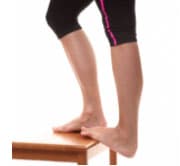Your 9-year-old wakes up crying in the middle of the night telling you their legs hurt. You rub them and soothe him as much as you can, but you’re not sure about what to do beyond this.
Sound familiar?
You child might be having growing pains, which occur in as many as 25%-40% of children. They usually occur during two time periods, which are in early childhood in 3-5 year olds and in later childhood in 8-12 year olds.
What are growing pains?
Growing pains are not a disease…you probably won’t even have to go to the doctor for them. And, despite the name, there actually is no research out there that suggests that growth is painful. This pain is so named because it almost always stops when the kid stops growing.
These pains are often described as throbbing, achy feelings that most often occur in the front of the thighs, behind the knees, or in the calves. The largely distinguishing feature is that growing pains usually occur in both legs, not just one side. Pain usually begins in the later afternoon to nighttime and usually is gone by morning. Sometimes, your child may wake up in the middle of the night due to this pain.
What causes growing pains?
Well, no one is 100% sure. As stated previously, there is no evidence that growing itself causes pain. One theory is that bones and muscles don’t grow at the same rate…that is, your bones grow faster than your muscles do and your muscles are having a hard time keeping up. Another theory is that it is likely due to leg muscle overuse during the day. Children, at this age especially, are usually very active, and, sometimes, all the running, jumping, and climbing can be a little hard on the body.
Please be aware that soreness is normal with frequent activity, such as sports or dancing. However, if your child is having pains beyond typical soreness, it is important to talk to your child about listening to their bodies and taking breaks.
What can I do about them?
While there are differing theories as to the cause of growing pains, these recommendations remain the same. Good news about growing pains is that they are temporary. Always listen to your child when they complain and never ignore the pain! When they do happen, here are few suggestions to help calm the pain:
- Apply mild heat directly to where the pain is
- Give light massage to the painful or surrounding areas
- Gently stretch the affected muscles
- These are recommended to prevent growing pains as well
 Bow Pose for quad stretch Bow Pose for quad stretch |
 Calf stretch off a step Calf stretch off a step |
 Seated hamstring stretch Seated hamstring stretch |
When do I seek medical help?
If the following signs occur, seek medical help and/or call your physician:
- Long-lasting pain, morning pain, or redness/swelling in one area or joint
- Severe pain that interferes with your child’s normal activities
- Fever
- Limping
- Lack of energy
- Weight change/loss
- Loss of appetite
- Weakness
- Tiredness
- Injury
Your kid may never feel growing pains, but if they do, reassure them that it is only temporary. You’ll work together through it, and, if you don’t feel comfortable knowing what to do, reach out to your physical therapist. We’ll help both you and your child through this temporary, but still discomforting, time.

